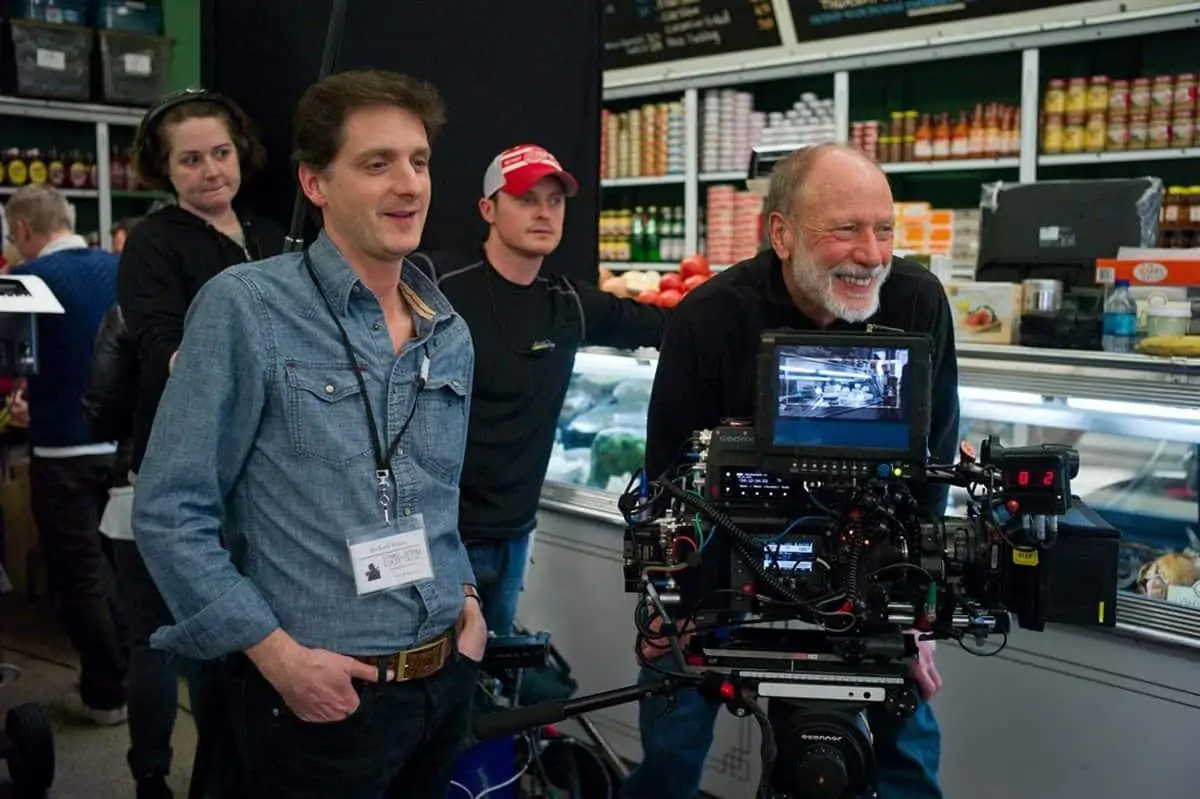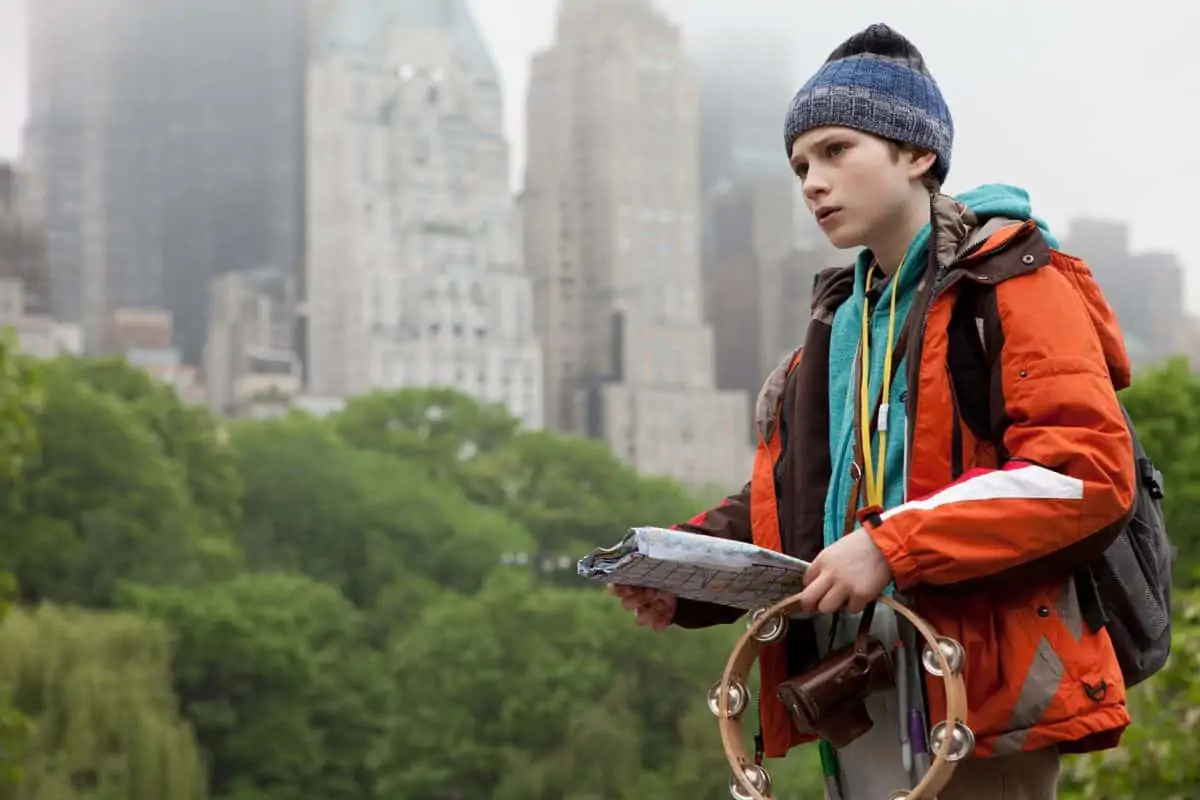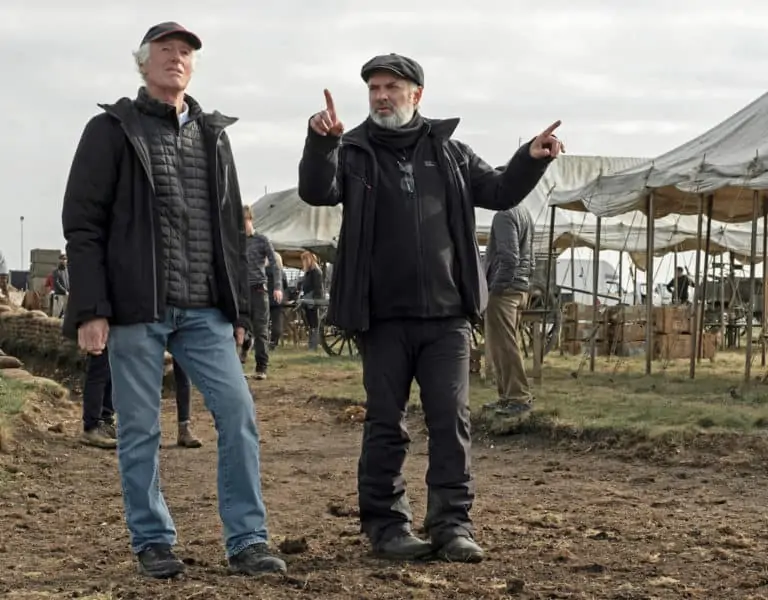Emotional Power
Chris Menges BSC, ASC / Extremely Loud and Incredibly Close

Emotional Power
Chris Menges BSC, ASC / Extremely Loud and Incredibly Close
Like directors, cinematographers either work on a wide variety of film styles or concentrate more on a specific genre. Chris Menges BSC ASC has managed to combine both approaches, but in most of his work is a sense of heightened reality, whimsicality or other-worldliness, even in the most serious of stories, writes Kevin Hilton.
His naturalistic, flowing photography would appear to be a good match for the film version of Extremely Loud And Incredibly Close, which had a limited US opening on Christmas Day and gets a European release from February. Menges took over the cinematography when the original director of photography, Harris Savides ASC, had to have emergency surgery.
Needing a last minute replacement, director Stephen Daldry called on Menges. The two worked together on The Reader (2008), coincidentally another film Menges took over, on that occasion from Roger Deakins BSC ASC. It was a good fit, as Menges says he got on well with Daldry on The Reader, and was familiar with the city too, having worked on several documentaries in New York including the documentary East 103rd Street (1981), which he also directed, as well as some sequences for The Reader
The five boroughs of New York are the backdrop to Extremely Loud And Incredibly Close, which follows young Oskar Schell – a precocious self-styled amateur inventor, detective and letter-writer who may or may not have Asperger's syndrome – as he travels to each area looking for the lock that fits a key he found in a cupboard used by his indulgent father Thomas (played by Tom Hanks), who died in the 9/11 attacks on the Twin Towers.
Menges says he was drawn to the film by the story of a boy coming to terms with a catastrophic loss. The screenplay was written by Eric Roth, whose extensive credits include The Curious Case Of Benjamin Button (2008) and Forrest Gump (1994), and is based on the 2005 novel by Jonathan Safran Foer, which Menges says did not read beforehand.

"I was intrigued with the screenplay and purposely stayed away from the book so I could concentrate on what was going to be filmed – books and screenplays can be very different," he explains. Menges draws a parallel between Extremely Loud And Incredibly Close and his first film as DP on Ken Loach's Kes (1970), starring David Bradley. Like the current film, that was adapted from a novel and features a young, first-time actor playing a character coping with traumatic times. "Ken Loach is a great director, and the young David Bradley was superb in the lead," Menges recalls. "It was also a time in history, and a learning process for me."
A key element of Kes is its observational style of photography, which Menges says came partly from films that influenced him – notably A Blonde In Love (1965), directed by Milos Forman – and his own documentary work. "Coming from that background I learned the importance of sound and also capturing the moment."
Menges feels he was able to expand on that approach for Extremely Loud And Incredibly Close by using modern file-based technology. Harris Savides had initially considered shooting on 35mm anamorphic gear, but was also interested in the ARRI Alexa digital camera. Menges had already spent some time investigating Alexa when he shadowed Bob Richardson ASC on the set of Martin Scorsese's Hugo, and was familiar with the camera. After also carrying out tests with the manufacturer, Menges decided on Alexa, using ARRIRAW data outputs recorded on to a Codex Onboard recorder.
"Having done these tests we pushed forward to work with the Alexa ARRIRAW workflow," Menges says. "The other big thing, as far as I was concerned, was using Codex, as it can record for 50-minutes at a time."
The only downside of using the Alexa for Menges, was having to use an electronic viewfinder, which was all that was available at the time. "In every scene you need think about the shots that you need to make the scene work. The electronic viewfinder made it very difficult to think about the editing because it produced such garish pictures, making it harder to concentrate on the construction of the scene," he comments. "The only way for me to deal with it was to take my eye away from the viewfinder and to look in the room to understand what I was shooting."

"There is an edgy quality to it and that helps in making the audience think 'Where is this child going?' "
- Chris Menges BSC, ASC
The capacity of the Codex for longer takes was an advantage when working with Thomas Horn, who plays Oskar. Horn came to prominence in 2010 when he won $31,800 on the teenage version of US game show Jeopardy! but Incredibly Loud... is his acting debut. Menges observes that he used the technology and his experience of working with directors like Loach, Stephen Frears and the late Alan Clarke – who often cast young, inexperienced actors and focus on character as much as the social issues at the heart of a story – to capture Horn's performance.
As with many of his other films, Menges operated the camera himself. This is partly because he prefers to look through the camera and not at a monitor. It also means the scenes could be kept very personal, with only the actors and a small crew – Menges plus the focus puller and a boom swinger. This helped particularly in the sequences between Horn and acting legend Max von Sydow, who plays an enigmatically silent character called The Renter. "When I read the screenplay the scenes between Oskar and The Renter really worked for me," Menges says. "There are some remarkable scenes in which Max von Sydow is interacting with Thomas Horn."

An aspect of the spontaneity Menges looks for in a film shoot comes from using a moving camera. In this case he used some handheld shots, although he acknowledges that Stephen Daldry is "not a big fan" of this technique, as well as dollies, a Steadicam (which he did not operate) and other hardware. "Stephen's approach was that the film should feel active in almost every scene, even if there is no movement in the performance," Menges says. "There is an edgy quality to it and that helps in making the audience think 'Where is this child going?'."
Finding a way to transfer what is on a page to the screen is the basis of filmmaking and, Menges concludes, has to begin with a something that engages the filmmakers as well as the audience: "I have to be drawn to a story and a I try to work on films that will engage me. I've made a few mistakes in that but you can never tell for certain what will make a great movie. If I could then I'd only work on great movies."
Looking back, Menges says he thoroughly enjoyed his experience on the production, and is pleased with film’s emotional power. He is also keen to praise his crew, originally selected by Savides. “I salute the crew that Harris chose. Our first AC Gregor Tavenner is an outstanding focus puller, and when he had to leave the film, we were fortunate to work with Andy Harris for the last six weeks. Maceo Bishop, on Steadicam and our B-cam operator, was consistently willing and ready, and excellent too, as was Pat Capone, the second unit DP. Tommy Prate, the key grip, was always one step ahead with a bight idea, and Brendan Malone, the dolly grip, was a joy to work with, as was the gaffer Bill O’Leary and his great electrical crew. I owe them all a debt of thanks.”










